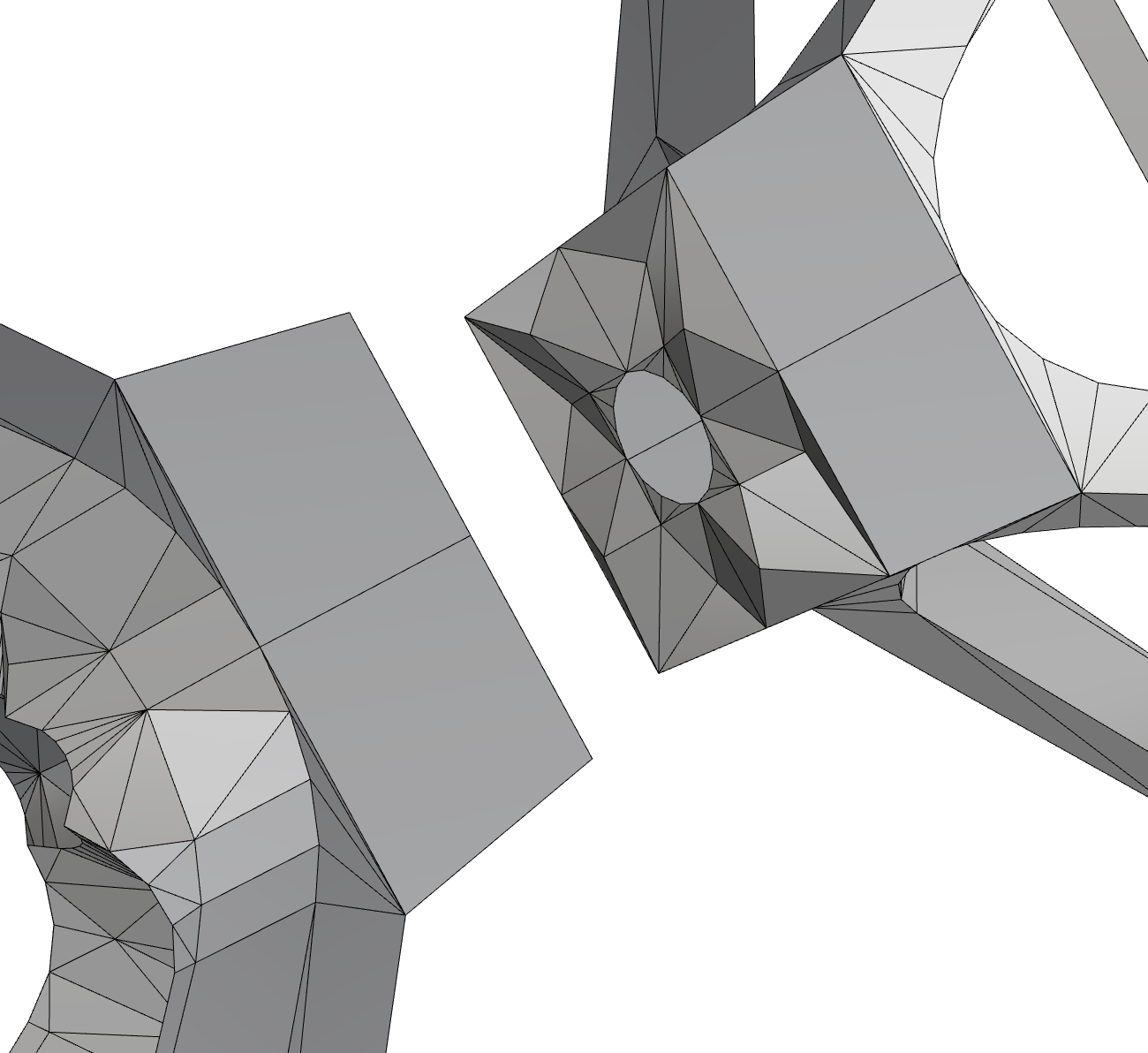


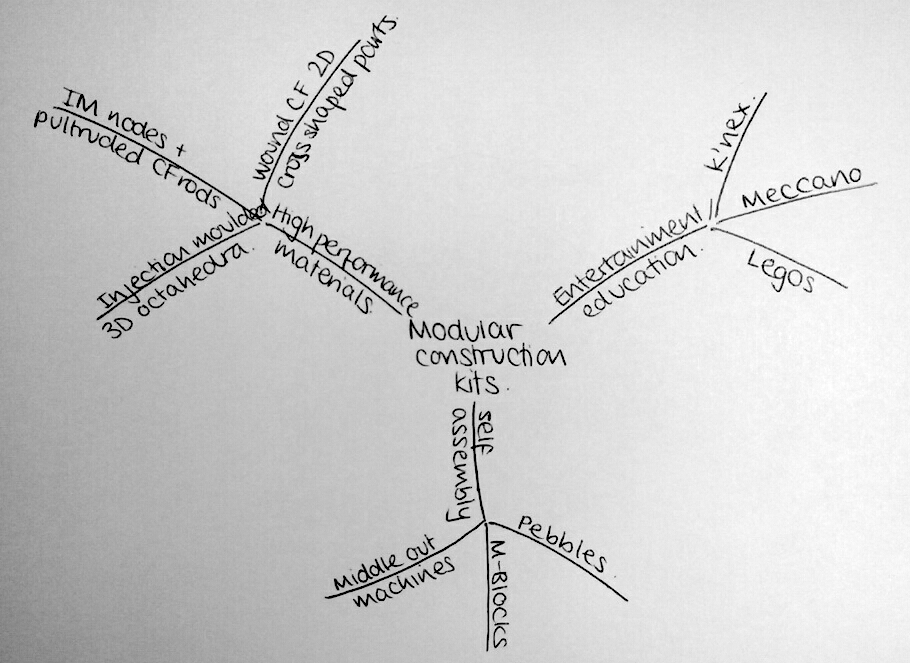
The requirements of the high performance material modular kits examples are focused on achieving high specific stiffness and therefore aim to minimize the structural mass whilst distributing the load efficiently through the structure. The requirements for a modular kit for entertainment or education are based around reliability and robust connections that can be reassembled hundreds of times. The requirements for self assembling systems are based around simplifying the manipulation required to navigate a part into place and form a connection.
Many modular construction kits work around cubic arrangements. This configuration is favourable as it generates three orthogonal planes from which to build. It also makes the conceptualisation of arrangements and mechanisms a great deal easier. The basic diagram below shows a cubic configuration as a decomposition of struts and nodes.
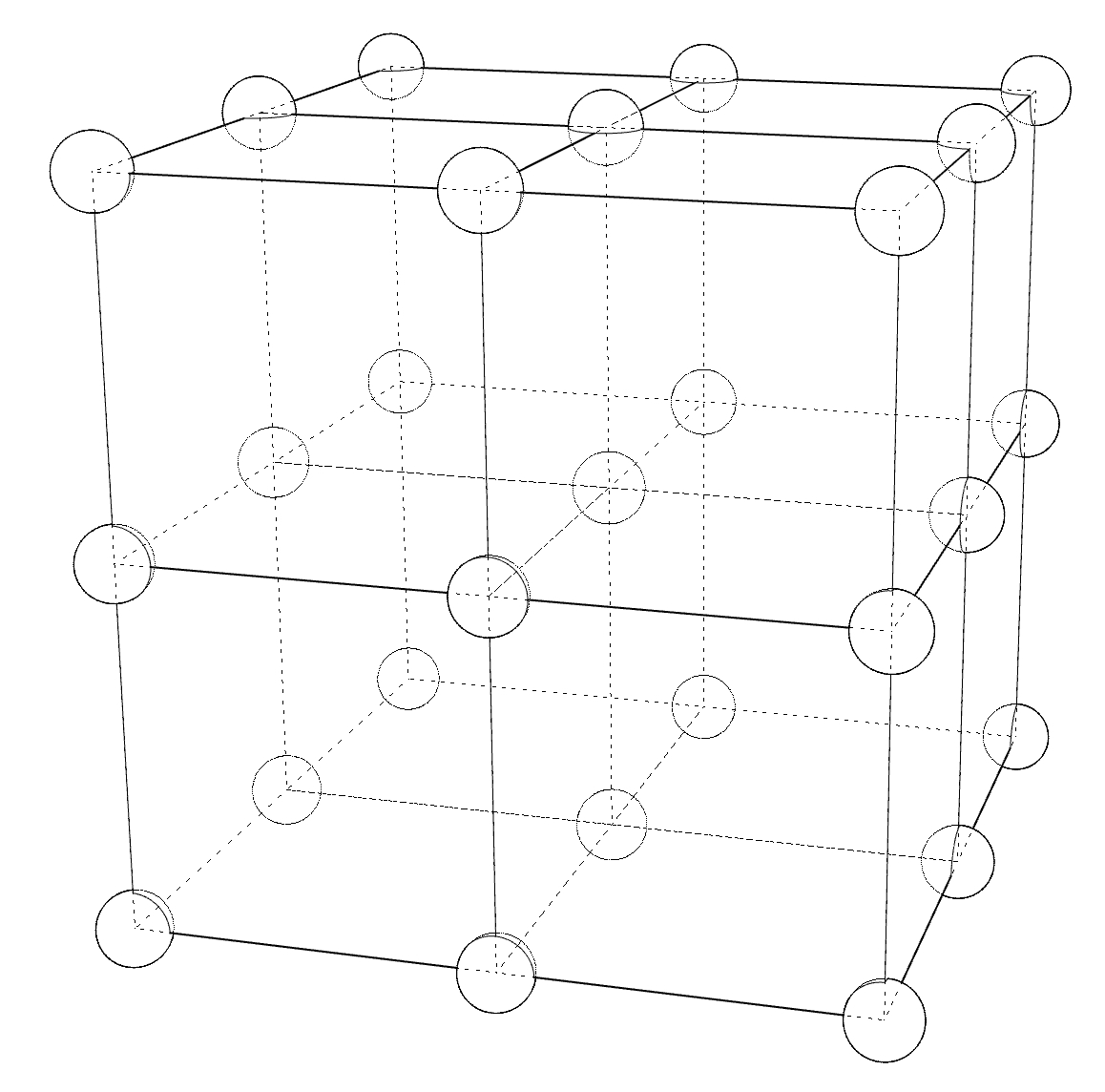
Three examples of modular construction kits that follow a cubic configuration are shown below as well as details of the connection design. The connection between adjacent octahedra is made using 0-80 nuts and bolts. The connections for K'Nex the Middle Out Machines involves elastic deformation of the gaps into which the strut pieces fit. The K'Nex structure does not fully constain the end of the strut.

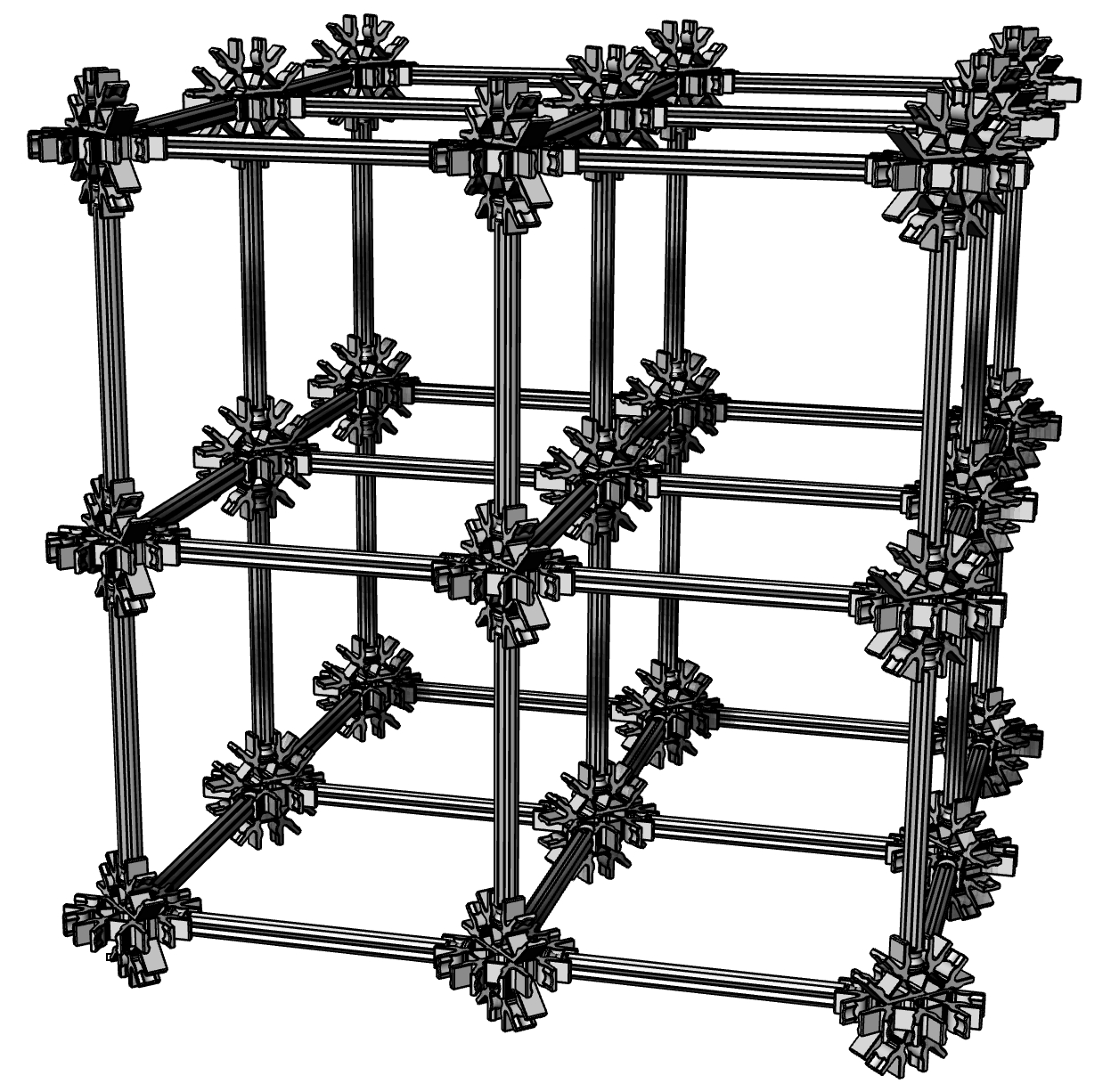
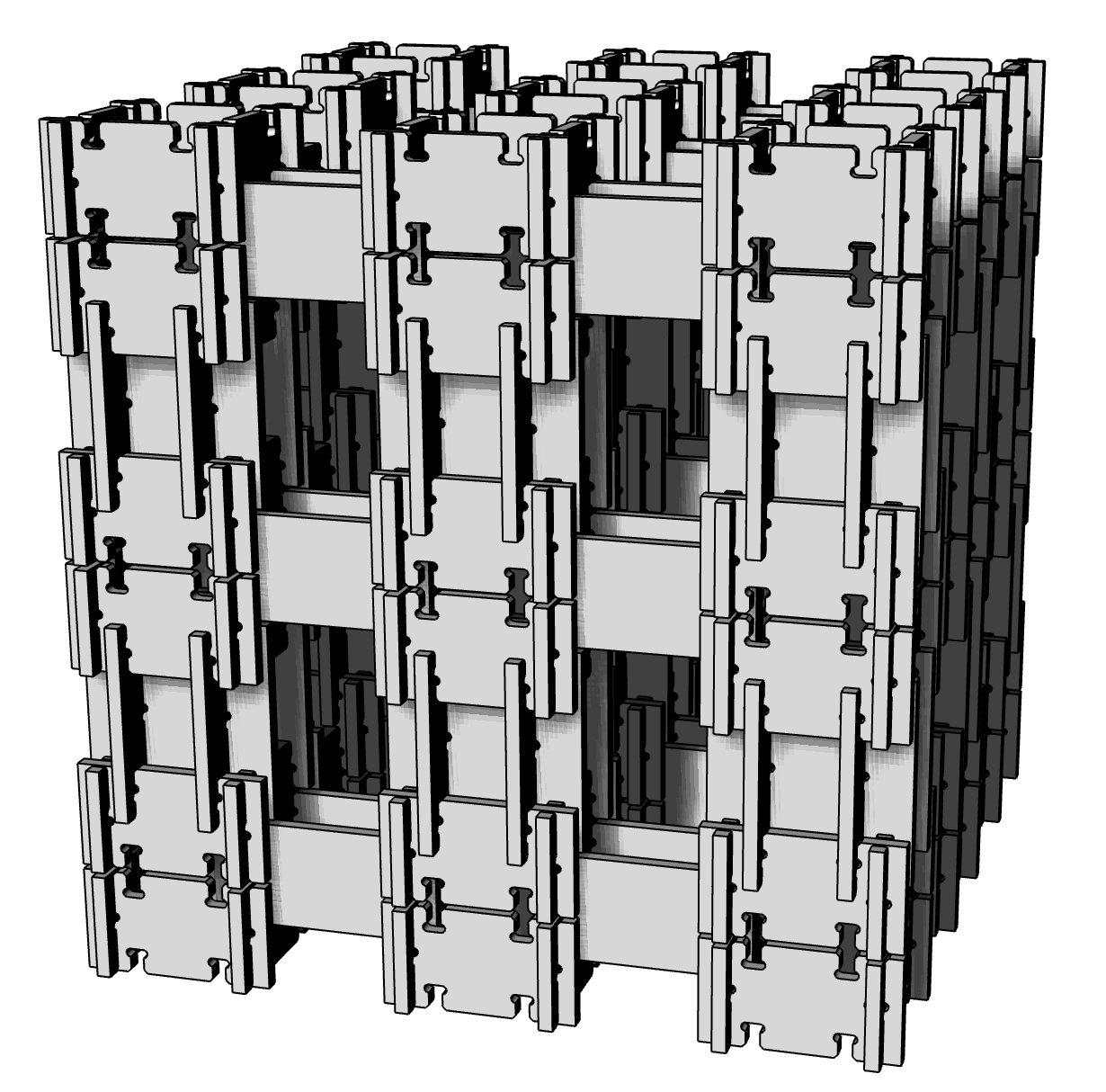



I began by scaling up Will's parts and built a structure using 1/8" plywood. In the example structure shown below, I used his parts to construct a 90 degree change in the build plane. From this example you can see that the transition takes up rather a large volume. Therefore in moving forward with a new design it was important to move to a system of parts that could be built out in all directions.

In this first attempt I tried to design a construction kit with nodes and struts as separate parts. The struts are designed with a hollow square cross section to allow for the incorporation of hinges and actuators into the space as the construction kit expands in functionality.
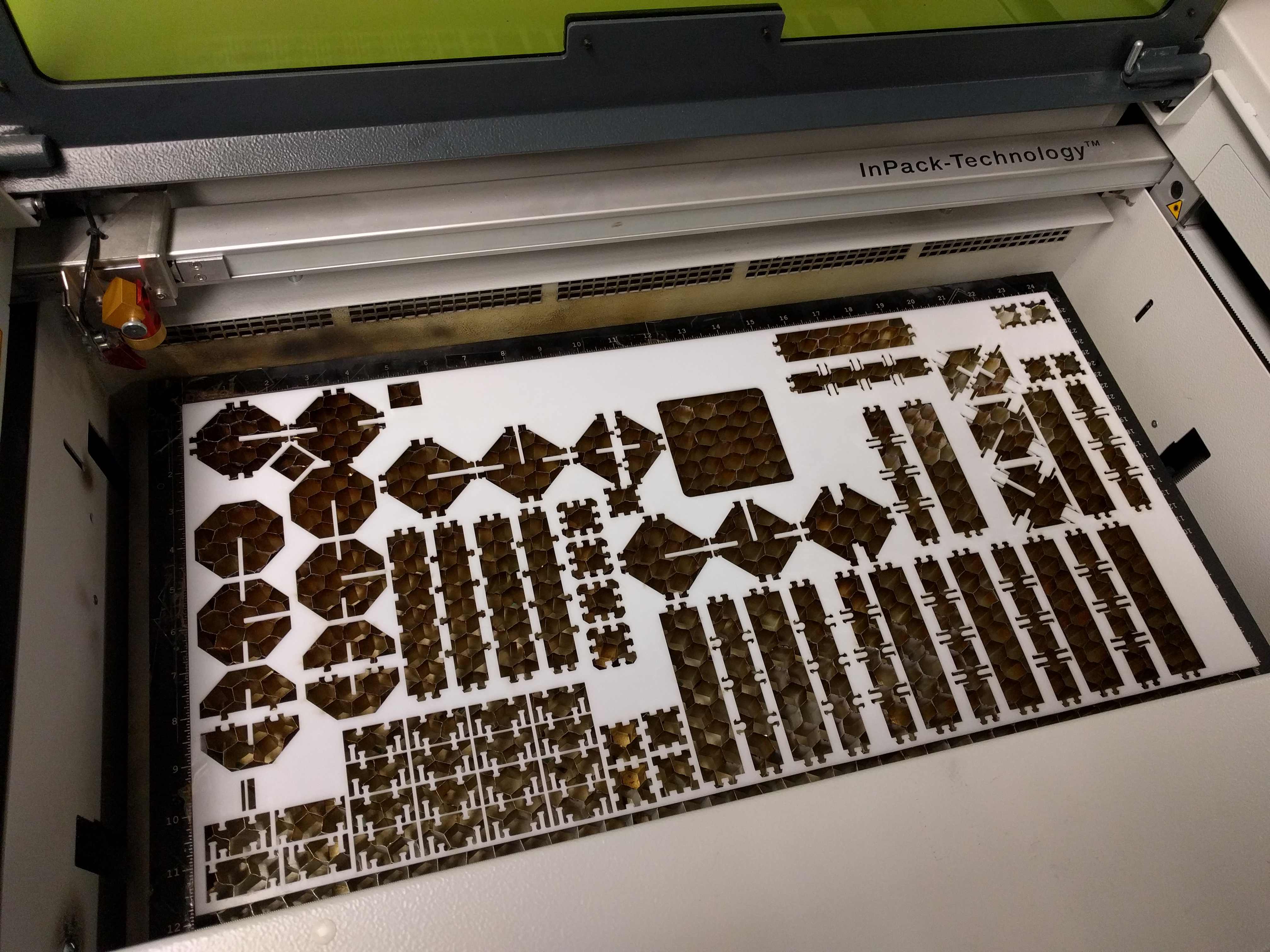
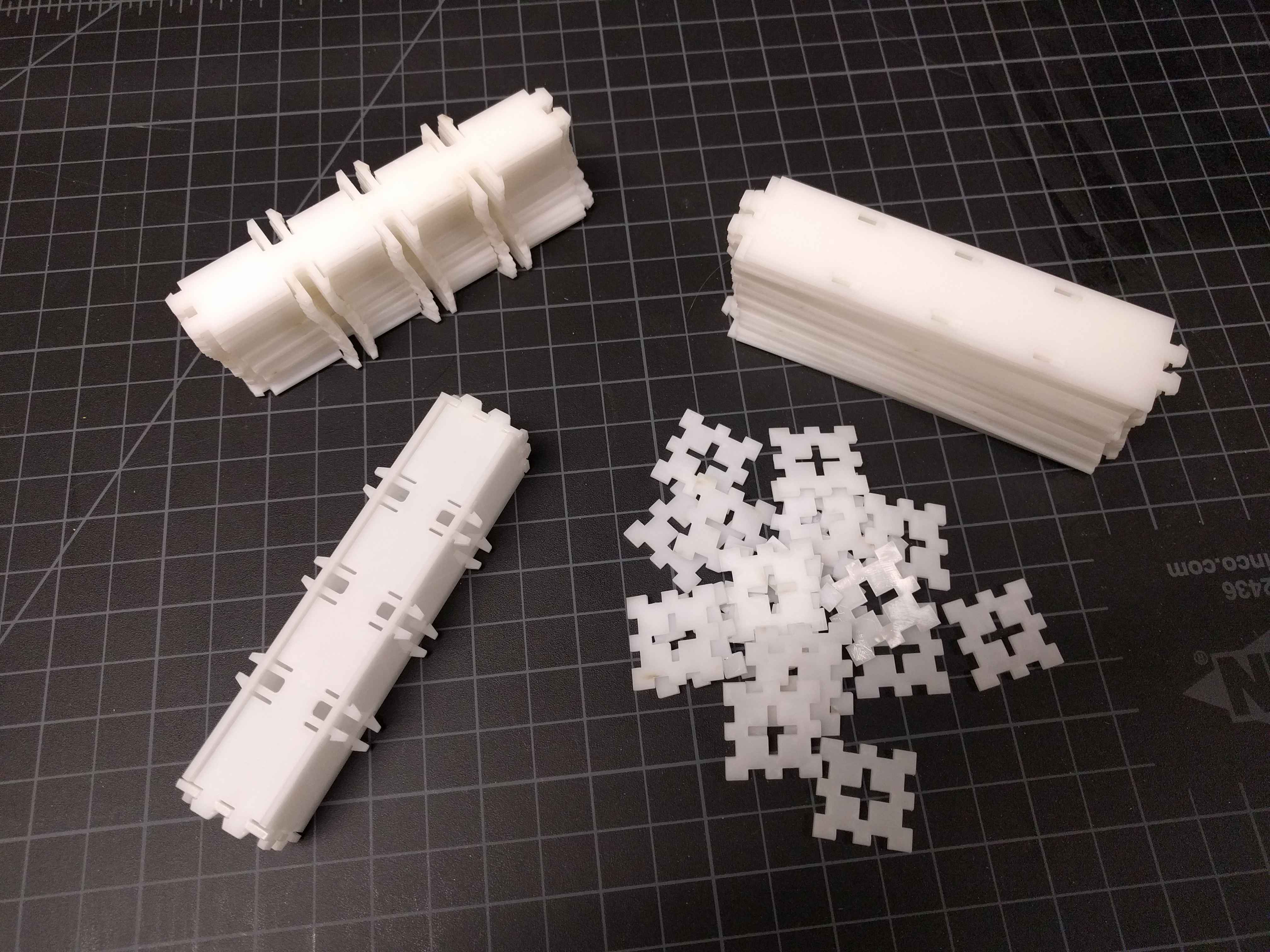


From this inital design, there are several aspects of the design process that I think are important moving forward: